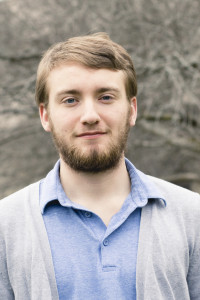Samuel P. Huntington’s thesis on the “Clash of Civilizations” is a seminal work in political science. The work describes a post-Cold War theory of conflict that occurs between groups of nations, monolithically bound together by their ideologies. No longer were individual states warring against each other; the industrialized and post-colonial countries now warred over cultural differences, not for the pursuit of territories or economic properties.
Huntington’s thesis was countered by Edward Said in his “Myth of the Clash of Civilizations”. Said’s primary criticism of the thesis was that it grouped cultures too homogeneously. In his speech, Said outlined his criticism thusly,“Huntington defines Islamic civilization reductively, as if what most matters about it is its supposed anti-Westernism. I mean it doesn’t matter to him that Muslims have other things to do than to think about the West with hatred. But you get the impression that that’s all they are thinking about is how to destroy the West, bomb it and destroy the whole world really.” The myth that Said makes reference to ought to be broken by examining the more nuanced and individualistic qualities of cultures. One must break a culture into sub-cultures and further break this sub-culture into sub-sub-cultures ad infinitum.
 Although, as academics, Huntington and Said would be repulsed by the suggestion that a proper approach to the foreign entity might be found in the middle-ground between the two philosophies, that is exactly what I would suggest.
Although, as academics, Huntington and Said would be repulsed by the suggestion that a proper approach to the foreign entity might be found in the middle-ground between the two philosophies, that is exactly what I would suggest.
When one begins to address a foreign entity – sex, race, political philosophy, country, city, town, club, group, team, major, etc. – one must begin as Huntington suggests, defining a culture by its known tropes and stereotypes. Truly, there is no alternative. We cannot separate our deeper prejudices, whether good or bad, without complete emotional reservation. Where we must differ from Huntington is in how we treat our judgements.
Firstly, we must not allow any prejudice to keep us from pursuing a meditation and understanding of the entity. Every culture, no matter how violent, intolerant, or dull it appears to be, is worth a deeper examination. There are always motivations for every aspect of a society. One can rarely be too granular in dividing a culture into parts. Even the motivations of individuals may be subdivided at least once or twice.
Secondly, we must allow for the possibility that our judgements will change. One must admit that one’s understanding can, at any point in the process, be wrong. Perhaps you think physics majors give their opinion pieces pretentious titles. Here you would have some evidence in your hands, but in order to understand that culture properly, you must be open to the idea that next week another physics major will publish an opinion piece with a non-pretentious title. It is a definite possibility.
Through these steps, we apply Said’s thesis, breaking a culture down into sub-cultures. However, these subcultures cannot be understood without some application of generalization. Therefore we are required to take Huntington’s approach of stereotyping again. This is then followed by Said’s in a cycle that breaks and constructs new deeper cultural understanding with every iteration. This approach is applicable to any foreign entity, even to an individual.
 In practice, you select a group, let us say “people who hang out in the coffee shop”. Look at what assumptions you can make about the group: they drink coffee, they are college students, they listen to music on headphones, they use laptops, etc. Don’t let any of these assumptions keep you averse from getting to know “people who hang out in the coffee shop”. Dive into learning about this group. Find that not all of them use laptops. Develop two categories: “people who hang out in the coffee shop who use laptops” and “people who hang out in the coffee shop who don’t use laptops”. You begin the process again, splitting these groups even more until you reach the absolute limit perhaps, “woman who hangs out in the coffee shop who uses a laptop, listens to Arcade Fire, drinks black coffee, wears jean jackets, runs every now and then, has read Camus, etc. etc. etc.”
In practice, you select a group, let us say “people who hang out in the coffee shop”. Look at what assumptions you can make about the group: they drink coffee, they are college students, they listen to music on headphones, they use laptops, etc. Don’t let any of these assumptions keep you averse from getting to know “people who hang out in the coffee shop”. Dive into learning about this group. Find that not all of them use laptops. Develop two categories: “people who hang out in the coffee shop who use laptops” and “people who hang out in the coffee shop who don’t use laptops”. You begin the process again, splitting these groups even more until you reach the absolute limit perhaps, “woman who hangs out in the coffee shop who uses a laptop, listens to Arcade Fire, drinks black coffee, wears jean jackets, runs every now and then, has read Camus, etc. etc. etc.”
You might be able to see a few problems with this. The perspective is wholly superficial. Despite this, there isn’t enough time in the universe to fully analyze everyone in the coffee shop in this way. The finished description is non-plastic; it can’t contain the person’s changes throughout their life, only those that are present at a precise moment.
Despite these known limits, a moderated application of this Huntington-Said cycle works against prejudice and toward a better understanding of the foreign other. It is this understanding that must always be sought. It brings a greater peace between people and cultures.
